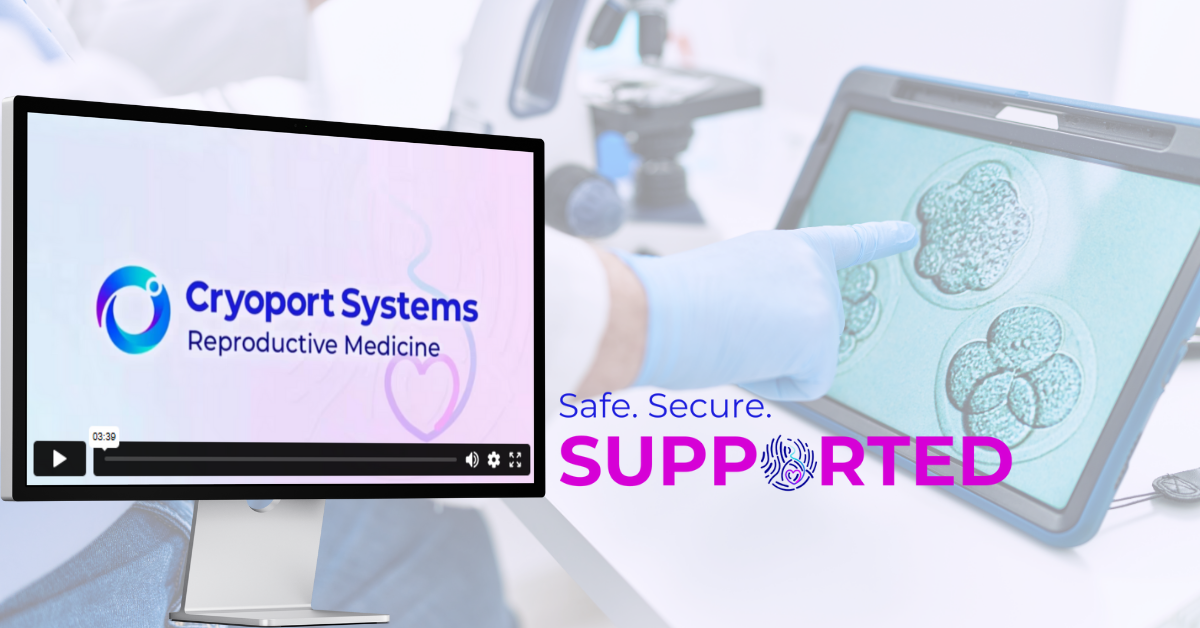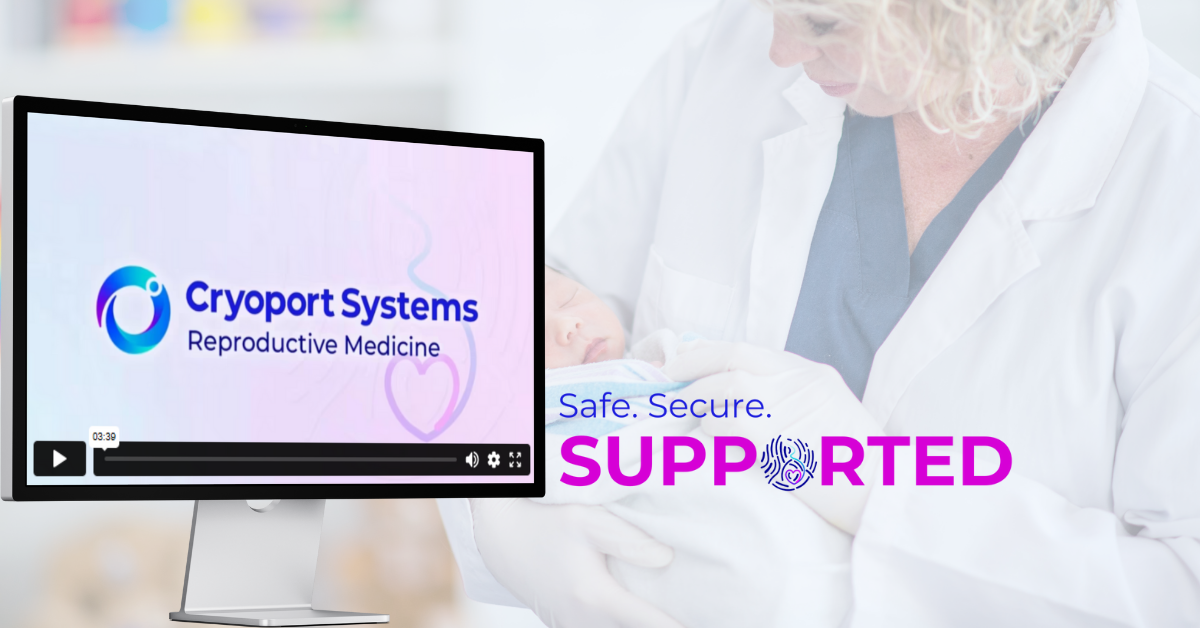Risk in Practice: The Embryologist’s Frontline Safeguards
Inspired by the recent International IVF Initiative (i3) Webinar, Cryogovernance® VIII, sponsored by Cryoport Systems.
When it comes to fertility treatments and IVF, embryologists are often seen as the final line of defense, the protectors of patient specimens who ensure that all patient materials are handled with precision. But as Amanjot Grewal (Scientific Director, Pinnacle Egg Bank) emphasized during the Cryogovernance® VIII webinar, safeguarding reproductive materials is not only about technical skill. It’s about systems. It’s about governance. And it’s about recognizing that even the most diligent embryologist cannot mitigate risk alone.
Cryogovernance, as Grewal described, is the evolution from passive cryomanagement to proactive accountability. It’s a mindset shift that begins not with policy but with practice… the daily habits, decisions, and safeguards that define how risk is managed at the bench level.
From Autopilot to Accountability
That structure works best when it’s reinforced at the bench. As Grewal reminded attendees, “…your risk is a function of a couple of things…It’s a function of the resources that you’re provided. It’s a function of the SOPs and documentation that is put in place. It’s also a function of how well staffed your laboratory is. But your risk is also a function of you and your choices.”
She introduced a compelling metaphor of “highway hypnosis,” referring to the mental state when a driver travels hundreds of miles without consciously remembering the journey. In IVF labs, she warned, this same autopilot mentality can creep into routine cryo tasks, especially when volumes are high and workflows are repetitive.
“While we can operate on autopilot in the car,” she cautioned, “in the IVF lab, we really do at this point need to make some very clear decisions and again, transition away from management, which is a passive action of triaging samples as they’re frozen, and move to governance where we’re thinking proactively about long-term solutions.”
Cryogovernance demands more than the routine. It requires conscious engagement with every step of the specimen lifecycle. “That’s all part of cryogoverance,” Grewal highlighted. “So while I’ve talked about good practice guidelines, for me, the biggest piece is safety and risk mitigation, regulatory compliance, and balancing those with…high quality technical and clinical performance, and operational excellence not only for ourselves, but also the patients that we work for.”
The Embryologist’s Risk Report Card
This shift begins with reflection. Grewal encourages embryologists to conduct an internal risk report card, acting as a candid assessment of their lab’s safeguards against key categories such as specimen labeling and documentation, chain-of-custody integrity, cryotank monitoring and maintenance, shipping coordination and SOPs, and consent form clarity and compliance. By evaluating these areas annually, ideally alongside CAP audits or SOP reviews, labs can identify vulnerabilities before they become liabilities.
This framework for risk assessment is both practical and empowering. It recognizes that while embryologists may not control every variable, they do control how rigorously they document, witness, and verify each specimen interaction.
She emphasized the importance of double witnessing at every stage of the specimen lifecycle, including cryo device labeling. Routine cryotank audits are essential, with clear records of what’s stored on-site versus off-site. Manual dipstick checks and weight-based monitoring help detect nitrogen loss early, and clear SOPs should be in place for every shipping scenario, whether it involves patient self-carry, clinic courier, or third-party logistics. Consent forms must be reviewed regularly to ensure patients understand disposition options and off-site storage policies. These practices form the backbone of cryogovernance and are increasingly essential as IVF programs scale and diversify.
“I know I’ve talked about embryologists and cryogovernance,” Grewal highlighted, “but I want to be explicitly clear. Everyone in the clinic is responsible for cryogovernance. And that’s because there are so many stakeholders that are involved. Your clinical team, your medical directors, for those that have operational team members or office managers, everyone needs to be involved in the decisions for cryogovernance because it really does impact the clinic on a larger scale than just the IVF lab.”
Avoiding the “Black Hole” of Shipping
One key point Grewal emphasized was reproductive shipping as a potential “black hole.” It’s the moment when a specimen leaves the lab and enters a realm of uncertainty where visibility, control, and accountability can vanish unless appropriate systems are in place to prevent it. “It’s important to me,” she said, “that the same cryogovernance principles that we’ve talked about until now, that we continue to keep those in mind as we move forward.” Referring back to SOPs, she encouraged that you “go back (to) that report card exercise, really think about all the different (shipping) options that you offer, and do you have very specific and detailed, documented steps for each of those different transport types?”
“Shipping should never feel like a black hole,” she pointed out. “Your strongest safeguards, in my opinion, are double witnessing, documentation, and I’ve probably said that a hundred times at this point, and really strong partnerships.”
Grewal emphasized that embryologists should vet their transport partners with the same rigor they apply to lab equipment or cryo devices. She encouraged clinics to ask whether the shipper is validated for cryogenic transport, whether the provider offers continuous temperature and GPS monitoring, and whether tanks are inspected for stress fractures, vacuum integrity, and evaporation rates. She also highlighted the importance of a strong QA/QC feedback loop, regulatory support for international shipments, and responsive communication protocols.
“So if you’re working with a shipping company, are they compliant with regulatory bodies as applicable? Have they gone above and beyond, and they’re actually looking at elective certifications? Are they doing self-inspections? And do they have a really strong QA, QC feedback loop?” she questioned. “And then second, is your partner embracing change and incorporating it into their systems?”
These aren’t luxuries, they’re necessities. And they’re increasingly expected by insurers, regulators, and patients alike.
Cryoport Systems Reinforces the Lab’s Daily Safeguards
Cryoport Systems plays a vital role in translating cryogovernance principles into practice. As Grewal and the other panelists noted, even the most meticulous embryologist depends on the reliability of logistics and reproductive transport to maintain chain of custody.
Cryoport Systems’ platform is designed to extend safeguards into transit.
- Validated cryogenic shipping systems are engineered to protect specimen integrity across distances and durations
- Continuous temperature and GPS monitoring ensures visibility into every shipment’s location and condition throughout transit
- Comprehensive Chain of Compliance® integrates seamlessly with clinic, lab, and biorepository workflows, supporting audit readiness and quality assurance
These features don’t just reduce risk, they reinforce trust. They allow embryologists to hand off specimens with confidence, knowing the same standards applied inside the lab are upheld outside of it.
Governance of the Future is a Team Sport
While Grewal’s talk focused on the embryologist’s role, she was clear that cryogovernance is a shared responsibility. Clinical teams, medical directors, office managers, and logistics coordinators all play a part in building a culture of safety.
That culture begins with training. It also requires specialization. IVF labs need to be building for the future and not just managing the present. That means anticipating growth, complexity, and risk while proactively designing systems that scale safely. “As we know, the IVF space has changed dramatically over the last 20 years, 10 years, five years, since last year,” Grewal commented. “And so evolution and innovation are necessary. And having a partner that has a knowledge of this changing landscape, that’s embracing it and actually is pioneering? That is incredibly important to continue to offer the safest options for your patients.”
Cryogovernance isn’t just a concept, it’s a daily practice. It’s the way embryologists label, witness, store, and ship. It’s the way clinics train, document, and communicate. And it’s the way logistics partners like Cryoport Systems extend those safeguards beyond the lab.
In a field where every specimen represents a family’s hope, risk management is foundational. And with a focus on cryogovernance, embryologists are leading the way in protecting the future.


